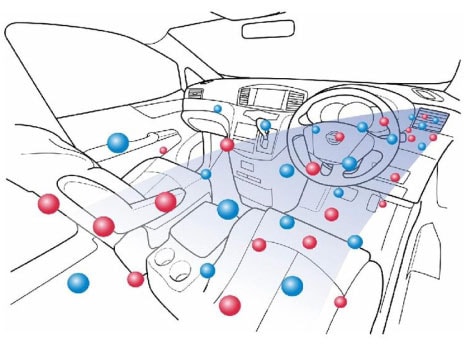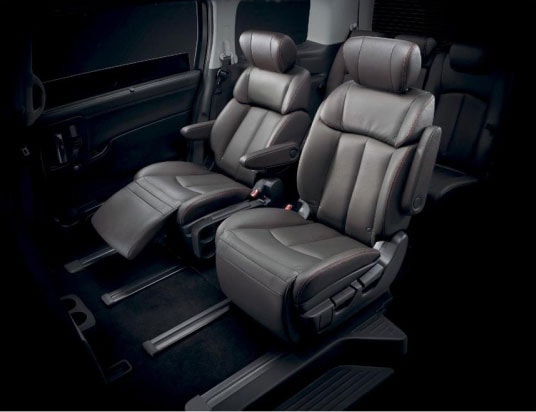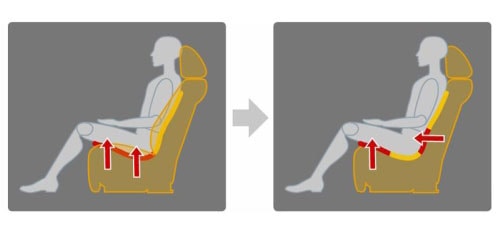The automotive world has accelerated its evolution pace in the last decade or so, with one of the direct results being the fact that modern cars offer a relatively high level of “passenger integration”. By this we are referring to all the technologies and features that are aimed at improving the passenger’s life on board.
Automotive producers from all over the world offer all kinds of safety and comfort features that help the driver, along with the passengers to enjoy their time in the vehicle.
However, the majority of these are only available on expensive vehicles and limited to offering new ways in which the car assists its occupants or new functions that keep them entertained.
Now, Nissan has decided to use a different approach, previewing the “Health & Well-Being Concept”. This is been designed to create a comfortable in-car environment by establishing a deeper connection with the passengers and will be offered on multiple future Nissan vehicles (also including reasonably-priced models) in two or three years from now. The developments included in the program are based on studies of the human body.
The concept is aimed at reducing the level of stress and fatigue of drivers and passengers, offering the necessary comfort to the body and mind for an optimum driving experience. The aforementioned deeper connection means that Nissan is currently developing innovative ideas to provide a comfortable posture and thermal environment to help improve blood circulation, as well as good cabin air quality for improved health.
The concept will introduce three new technologies: Comfortable Captain Seat, Advanced Climate Control System and Quick Comfort Seat Heater.
The Comfortable Captain Seat incorporates three technologies: “seat cushion-integrated leg rest," "articulated seatback," and "three-layered cushion pads." This is the first time when all three are used at the same time.
The seat’s all-in-one seat cushion and leg rest seat design supports the body as a whole, helping maintain a posture that can be relaxed. The seat cushion-integrated leg rest uses a large area to support the lower legs, helping to spread the body weight in order to avoid leg swelling. The articulated seatback allows for the maintaining of a balance of the muscular force around the backbone at close to “zero gravity”, which is said to be the least stressful posture for the human body, thus reducing physical strain. The three-layer cushion pads combine upholstery that offers different characteristics and can be adjusted for a higher level of comfort.
The Advanced Climate Control System allows three high-tech related devices to be controlled with a single switch: the Plasmacluster Ions generator, the inside/outside air control, and the grape polyphenol clean air filter. The last reduces allergen, as it uses a filter impregnated with natural grape seed polyphenol. The system is fitted with highly concentrated Plasmacluster Ions that have been proven to keep the skin naturally moisturized. These reduce the level of airborne bacteria and mold, deactivating ticks and microbe allergens in the air and controlling odors. The system uses a conventional gas sensor and also detects various odors, such as those coming from animals or industrial sites, automatically activating the ventilation flow. However, the company mentions that the level of skin moisture may be different depending on the person and operating conditions.
The Quick Comfort Seat Heater is aimed at offering an optimum level of heating density and control. Its development is based on human temperature sensitivity studies (Nissan says that this is a world-first), which have been conducted in a joint research program with Professor Yutaka Tochihara of Kyushu University Faculty of Design. The studies revealed that heat transfer efficiency and sense of comfort vary according to the region of the body. The system works in multiple stages of operation. In the first one, it warms the area of the thighs and buttocks. Once these become thermally stable, the system warms the lower back. This pathway shortens the time it takes for a person to feel warm by 35 percent, as compared to a conventional system.
Nissan claims that these technologies not only allow the occupants of a vehicle to relax, but also help to improve blood circulation, an effect that reduced driving fatigue.
Like we said, the project is still under development and Nissan series vehicles from multiple segments will receive its features in a few years.
Automotive producers from all over the world offer all kinds of safety and comfort features that help the driver, along with the passengers to enjoy their time in the vehicle.
However, the majority of these are only available on expensive vehicles and limited to offering new ways in which the car assists its occupants or new functions that keep them entertained.
Now, Nissan has decided to use a different approach, previewing the “Health & Well-Being Concept”. This is been designed to create a comfortable in-car environment by establishing a deeper connection with the passengers and will be offered on multiple future Nissan vehicles (also including reasonably-priced models) in two or three years from now. The developments included in the program are based on studies of the human body.
The concept is aimed at reducing the level of stress and fatigue of drivers and passengers, offering the necessary comfort to the body and mind for an optimum driving experience. The aforementioned deeper connection means that Nissan is currently developing innovative ideas to provide a comfortable posture and thermal environment to help improve blood circulation, as well as good cabin air quality for improved health.
The concept will introduce three new technologies: Comfortable Captain Seat, Advanced Climate Control System and Quick Comfort Seat Heater.
The Comfortable Captain Seat incorporates three technologies: “seat cushion-integrated leg rest," "articulated seatback," and "three-layered cushion pads." This is the first time when all three are used at the same time.
The seat’s all-in-one seat cushion and leg rest seat design supports the body as a whole, helping maintain a posture that can be relaxed. The seat cushion-integrated leg rest uses a large area to support the lower legs, helping to spread the body weight in order to avoid leg swelling. The articulated seatback allows for the maintaining of a balance of the muscular force around the backbone at close to “zero gravity”, which is said to be the least stressful posture for the human body, thus reducing physical strain. The three-layer cushion pads combine upholstery that offers different characteristics and can be adjusted for a higher level of comfort.
The Advanced Climate Control System allows three high-tech related devices to be controlled with a single switch: the Plasmacluster Ions generator, the inside/outside air control, and the grape polyphenol clean air filter. The last reduces allergen, as it uses a filter impregnated with natural grape seed polyphenol. The system is fitted with highly concentrated Plasmacluster Ions that have been proven to keep the skin naturally moisturized. These reduce the level of airborne bacteria and mold, deactivating ticks and microbe allergens in the air and controlling odors. The system uses a conventional gas sensor and also detects various odors, such as those coming from animals or industrial sites, automatically activating the ventilation flow. However, the company mentions that the level of skin moisture may be different depending on the person and operating conditions.
The Quick Comfort Seat Heater is aimed at offering an optimum level of heating density and control. Its development is based on human temperature sensitivity studies (Nissan says that this is a world-first), which have been conducted in a joint research program with Professor Yutaka Tochihara of Kyushu University Faculty of Design. The studies revealed that heat transfer efficiency and sense of comfort vary according to the region of the body. The system works in multiple stages of operation. In the first one, it warms the area of the thighs and buttocks. Once these become thermally stable, the system warms the lower back. This pathway shortens the time it takes for a person to feel warm by 35 percent, as compared to a conventional system.
Nissan claims that these technologies not only allow the occupants of a vehicle to relax, but also help to improve blood circulation, an effect that reduced driving fatigue.
Like we said, the project is still under development and Nissan series vehicles from multiple segments will receive its features in a few years.



